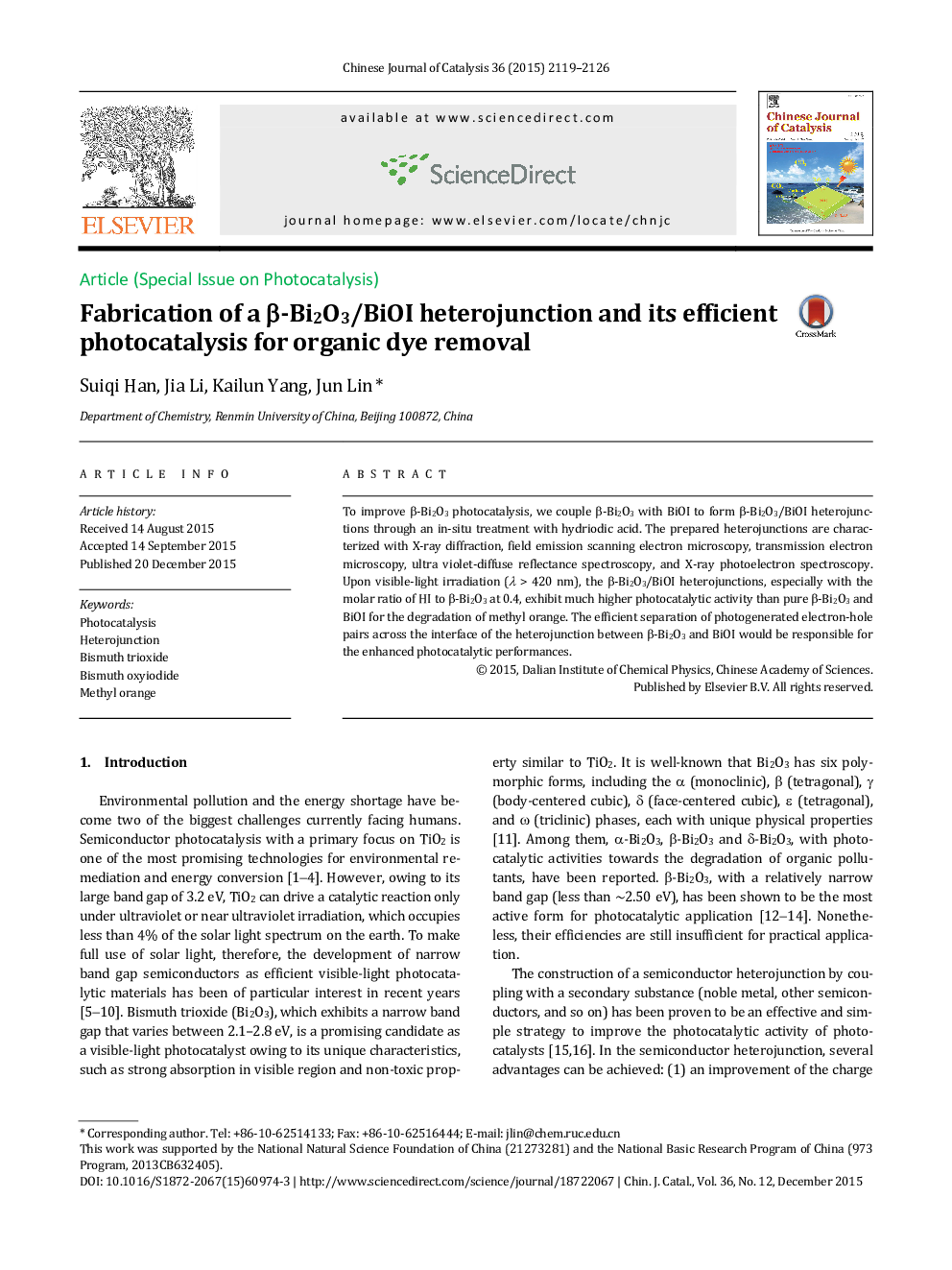| کد مقاله | کد نشریه | سال انتشار | مقاله انگلیسی | نسخه تمام متن |
|---|---|---|---|---|
| 58921 | 1419424 | 2015 | 8 صفحه PDF | دانلود رایگان |

To improve β-Bi2O3 photocatalysis, we couple β-Bi2O3 with BiOI to form β-Bi2O3/BiOI heterojunctions through an in-situ treatment with hydriodic acid. The prepared heterojunctions are characterized with X-ray diffraction, field emission scanning electron microscopy, transmission electron microscopy, ultra violet-diffuse reflectance spectroscopy, and X-ray photoelectron spectroscopy. Upon visible-light irradiation (λ > 420 nm), the β-Bi2O3/BiOI heterojunctions, especially with the molar ratio of HI to β-Bi2O3 at 0.4, exhibit much higher photocatalytic activity than pure β-Bi2O3 and BiOI for the degradation of methyl orange. The efficient separation of photogenerated electron-hole pairs across the interface of the heterojunction between β-Bi2O3 and BiOI would be responsible for the enhanced photocatalytic performances.
Graphical AbstractThe photogenerated electron-hole pairs are efficiently separated across the interface of the heterojunctions between β-Bi2O3 and BiOI, giving rise to the photocatalytic degradation of MO over the heterojunction.Figure optionsDownload as PowerPoint slide
Journal: Chinese Journal of Catalysis - Volume 36, Issue 12, December 2015, Pages 2119–2126